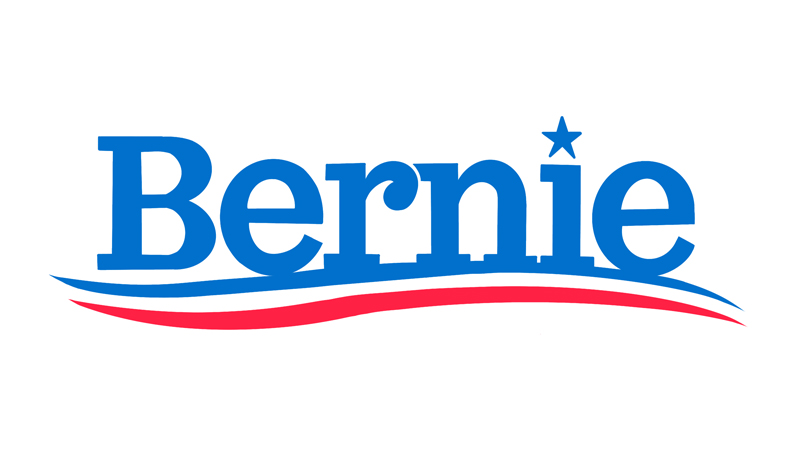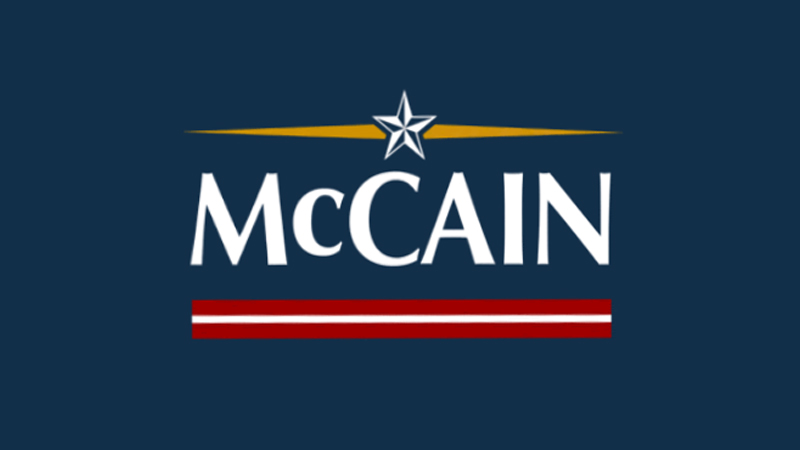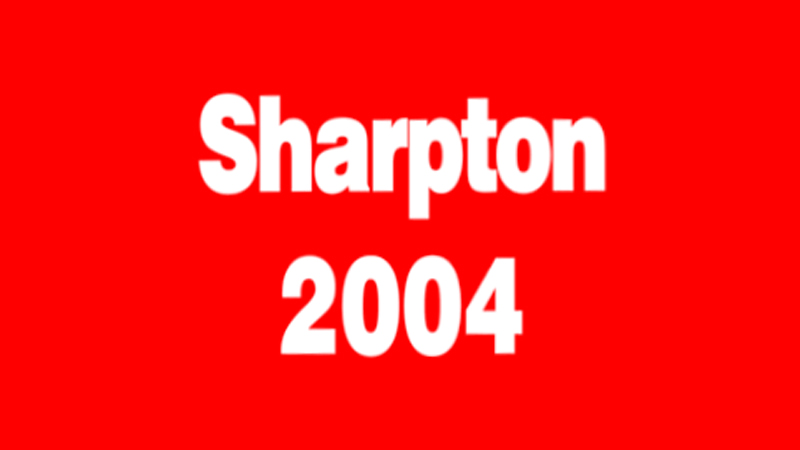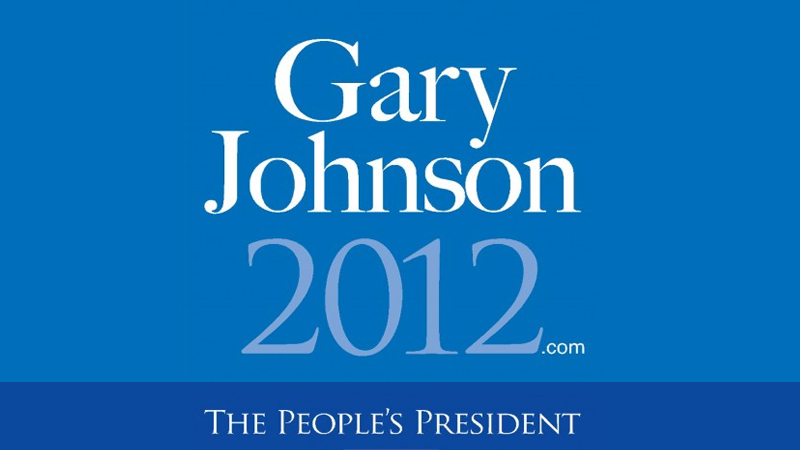How candidate diversity impacts color diversity
By Jan Diehm
How candidate diversity equals color diversity
These are the logos of the 2020 presidential primary campaigns. (We hope it’s not too triggering.)
A little over half of this year’s campaigns stuck to tried and true red, white, and blue (RWB) color palettes. If you couldn’t tell Michael Bennet, Steve Bullock, and Tim Ryan apart during primary season, their logos didn’t help.
Although the two major parties’ presumptive nominees are two septuagenarian White men who play it safe with color (Joe Biden and Donald Trump), the 2020 candidates were the most diverse in modern political history, especially on the Democratic side.
That diversity was reflected in color choices too: 40.5% percent of candidates used non-RWB color schemes, the highest percentage since 1984 (41.7%). The number of candidates may have also played a part. We looked at 37 candidate logos from 2020, compared to 12 in 1984.
You can see this in Kamala Harris’ bright homage to her heritage, Beto O’Rourke’s coincidental nod to Whataburger, and Elizabeth Warren’s signature liberty green.
There are many factors that can undoubtedly influence a candidate’s color decisions, but demographics are strong predictors. Let’s take a deeper look at how race and gender intersect with color choices...
In his“Rainbow Coalition” speech at the 1984 Democratic National Convention, Jesse Jackson said, “Our flag is red, white, and blue, but our nation is a rainbow — red, yellow, brown, black, and white — and we’re all precious in God’s sight.”
Jackson’s presence on that stage as a Black American, like Shirley Chisholm before him and Barack Obama after him, directly challenged what it meant to “look presidential” — a phrase historically reserved for White men who used traditional, patriotic color schemes. But, patriotism doesn’t only come in the red, WHITE, and blue variety.
"I believe we're finally beginning to enter an era where candidates aren't feeling as compelled to amplify their sense of credibility and suitability for such a high office by matching their look to their understanding of the office's historical look," said Ashleigh Axios, former Obama White House Creative Director in an April 2019 interview. "Instead, they're making space in their visual identities for themselves, owning and signifying that the White House is only as good as the people who occupy it."
Percentage of non-RWB and RWB color schemes
Non-RWB colors
RWB colors
The explosion of color for 2020’s candidates comes after a period of 3 election years (2008, 2012, 2016) where less than 20% of candidates stepped outside the RWB color palette — cycles where America’s first Black and first female major party nominees might have felt pressure to keep more traditional palettes. After all, only one candidate (Jimmy Carter, Democratic, 1976) has won the presidency since 1968 using a non-RWB color scheme.
Susan Merriam, co-founder of The Center for American Politics and Design, said that Barack Obama’s and Hillary Clinton’s identities were strategically built to have “broad, universal appeal and fit into a long history of presidential design.”
Candidates of color and female candidates often have to make a difficult decision when it comes to color: use non-RWB colors to signify a break with the status quo OR stick with a traditional palette to signal that they are just as qualified as the White male candidates who have typically won the presidency.
Historically, minority candidates have drifted toward the former.
All minority candidates
Although red and blue didn’t get cemented as the defacto colors for the Republican and Democratic parties until the 1990s, most major party candidates do employ some variation of a RWB color scheme.
Scott Starrett, whose firm Tandem designed Democratic House candidate Alexandria Ocasio-Cortez' 2018 purple and gold posters said: “There's a lot of tradition and a pretty well-established codification in politics. When you start to talk about outsiders or insurgency candidates ... you start looking at how do we communicate that this person is not your run-of-the-mill career politician.”
This is precisely the strategy of third party campaigns, which are more likely to feature minority candidates, like Jo Jorgensen (Libertarian, 2020), Jill Stein (Green, 2012 and 2016), and Eldridge Cleaver (Peace and Freedom, 1968).
Non-white candidates
Looking just at race, instead of both race and gender, candidates of color are still more likely than White candidates to use non-RWB colors, but the gap is significantly narrowed.
Even Barack Obama’s campaign (Democratic, 2008 & 2012), the first to feature a Black candidate on a major-party ticket, played it safe with color. In 2008, the New York Times reported that Obama “did not initially like the campaign's blue and white logo — intended to appear like a horizon, symbolizing hope and opportunity — saying he found it too polished and corporate.”
Michael Bierut, who designed Hillary Clinton’s 2016 ‘H’ logo, wrote that Obama’s team must have known what they were doing: “They must have known that the revolution, when it finally came, would have to be wrapped up in the most comprehensive corporate identity program the twenty-first century has yet seen.”
Non-male candidates
Female candidates are significantly more likely to use non-RWB color schemes and break the rules of branding. Many choose to lean on colors that are traditionally associated with femininity, such as purple and pink.
Merriam explained that purple is a popular choice for female candidates because “it signifies a middle ground between red and blue, and it hints at more feminine characteristics without it being pink.”
But, women candidates like Marianne Williamson (Democratic, 2020), Kirsten Gillibrand (Democratic, 2020), and Patsy Mink (Democratic, 1972), have even started to break down pink’s association with a brand of bubblegum girliness.
In an interview with Vox, Merriam said: “women have co-opted this color for means of empowerment as well; progressive and women-driven, the Women’s March pussy hats and Planned Parenthood come to mind. This I believe is what Gillibrand is trying to play into — branding herself as the candidate that will stand for women, be the first person to call out a senator for sexual harassment, benefit women in the military, and share her personal narrative of being a mom with two teenage sons.”
Non-white & non-male candidates
Intersectionality is also a strong predictor for whether a candidate decides to opt out of a red, white, and blue color scheme.
In 1972, Shirley Chisholm (Democractic, 1972) made the opposite calculation from Barack Obama in 2008. Her “Unbossed and Unbought” campaign choose to use a red, yellow, and black palette to stand out and mark her historic campaign: the first major party Black candidate, the first woman to run for the Democratic Party's nomination, and the first woman to appear in a presidential debate.
Nearly 50 years later, with the nation still battling the racism and sexism that Chisholm fought against, Kamala Harris (Democratic, 2020) chose to use similar red, yellow, and purple branding. In explaining the choice, Wide Eye, the studio behind Harris’ branding wrote: “...through further conversations with the campaign, we ended up drawing a powerful through-line between Kamala Harris’ then-impending candidacy and Shirley Chisholm’s historic run in 1972 as the first African American woman presidential candidate in US history.”
Overall, each candidate’s branding has become much more cohesive since the 1960s, when buttons, stickers, and signs for the same candidate could look vastly different. Campaigns are increasingly turning to agencies like Hyperakt (Pete Buttigieg), Wide Eye (Kamala Harris), Stoneridge Group (Marco Rubio), and Axiom Strategies (Ted Cruz) to do the heavy lifting. But even within in-house design teams, campaigns are thinking about branding like an advertising agency would: designs should be used to evoke emotion.
In a 2019 interview Bierut said, "The candidate is more important than the logo, and what will happen if it works properly is that people will associate their feelings about the candidate and project it onto the logo," he said.
Good designs emotionally connect voters to a candidate and logo. If that doesn’t happen, it’s not a good sign. Typographer Matthew Butterick adds, “And if I can’t trust you to pick some reasonable fonts and colors, then why should I trust you with the nuclear codes?”
Explore all the candidates’ colors below. Hover or tap for more details.
Methods
Building on work from Georgetown University and the collection of campaign logos from 4president.org, we tagged campaign logos going back to 1968, or through 14 presidential election cycles. We used each election year’s Wikipedia entry to compile a list of campaigns that includes major primary candidates from the Democratic and Republican parties and notable general election candidates from third parties. 32 candidates were dropped because an image of campaign material could not be found, leaving us with 271 total candidates.
To collect campaign logo images, we prioritized official signs for rallies, podiums, and yards, as well as posters and bumper stickers that included required Federal Election Commission disclaimers. We resorted to using buttons only in rare circumstances and only when the colors could be cross checked with other campaign memorabilia. Due to advances in technology, printing, and aesthetics, campaign designs are considerably more consistent today than they were in 1968.
Hexadecimal colors values for each logo were grabbed using Chrome DevTools on a candidate’s website or sampled using Adobe Photoshop. We acknowledge that is an imperfect method that can be influenced by the format of the image itself (newer digital logos use flat colors, while older logos are often pictures of original designs). Since we are not directly comparing the colors, an approximate color value is sufficient enough to tag logos in the RWB and non-RWB binary. Logos were considered RWB if:

Bernie Sanders (Democratic, 2020)
1. They used only red, white, and blue in 3-color designs

John McCain (Republican, 2008)
2. In addition to red, white, and blue, they used secondary accent colors

Al Sharpton (Democratic, 2004)
3. They used a 2-color palette like red/blue, red/white, blue/white

Gary Johnson (Libertarian, 2012)
4. They used a 3-color palette with multiple shades of a RWB color like dark blue/white/light blue
Candidate demographics were manually researched and collected. Candidates were then tagged in a binary for both race (White/candidate of color) and gender (male/female). Candidates were classified as majority candidates if they are both White and male. Candidates were classified as minority candidates if they are a candidate of color, female, or both.
This project was the original brainchild of Champe Barton, who laid a lot of the original groundwork and collected initial data. The color block graphic and interactions were inspired by this 2020 version from Axois and this visualization of Arnold Arboretum Plant Accessions by Yanni Alexander Loukissas.